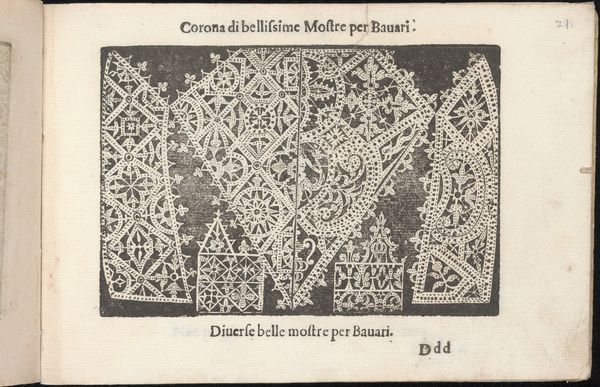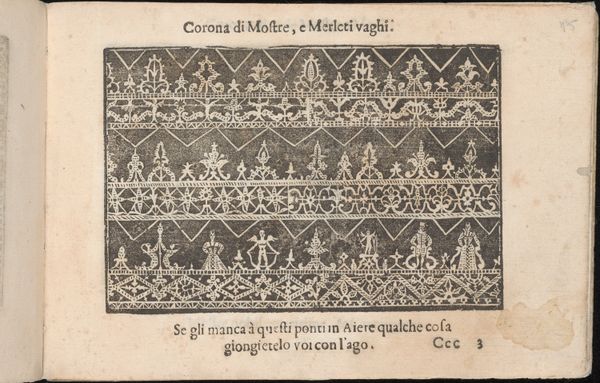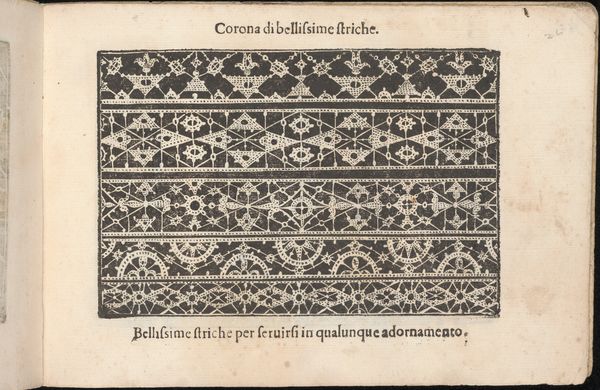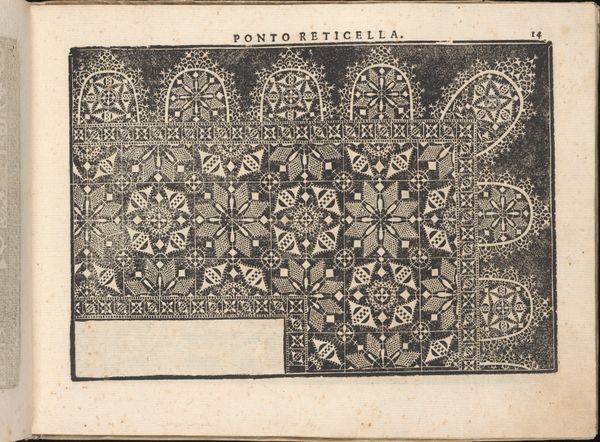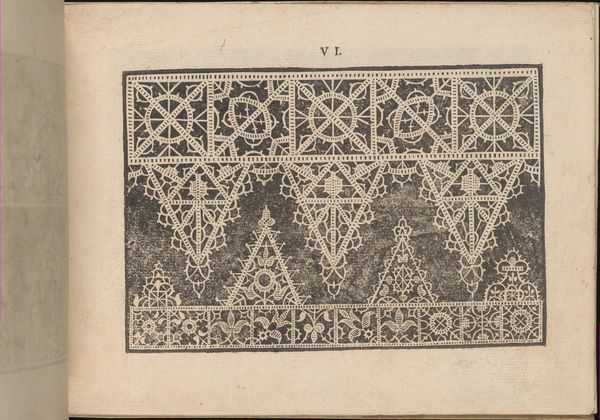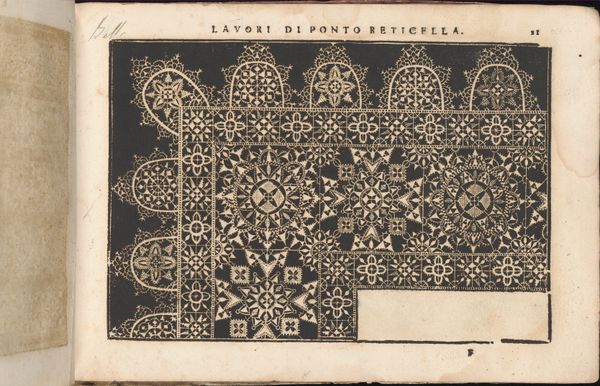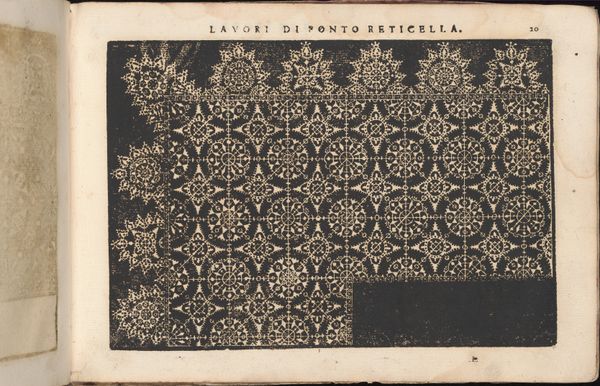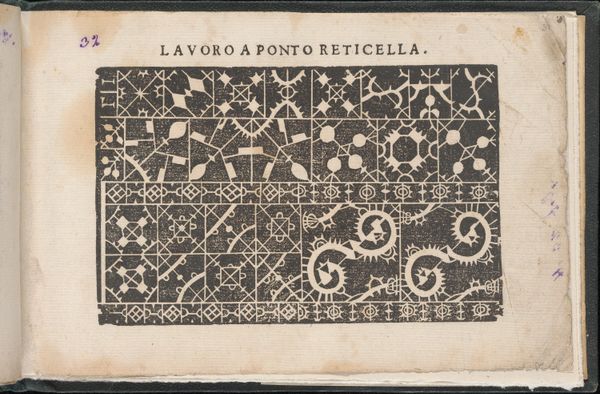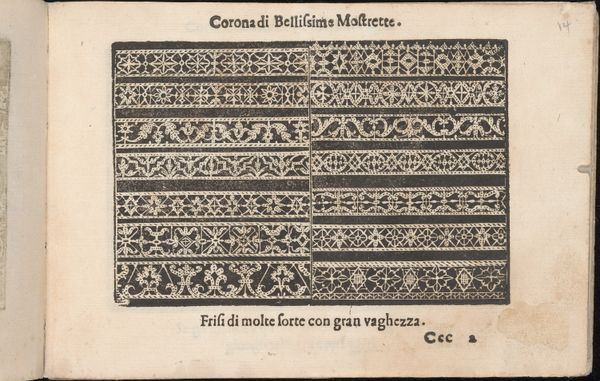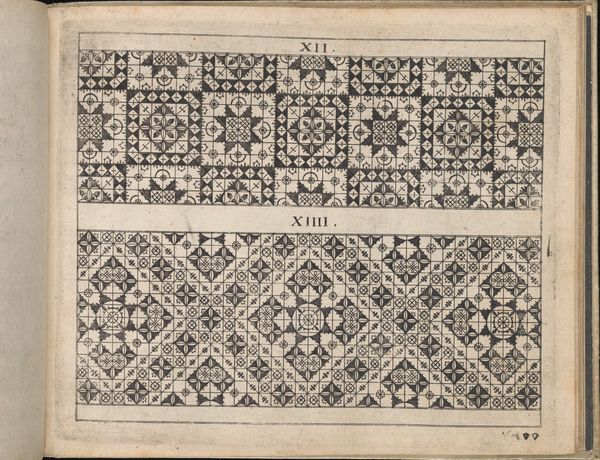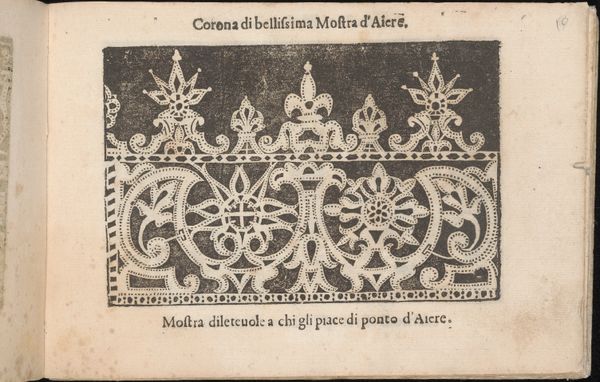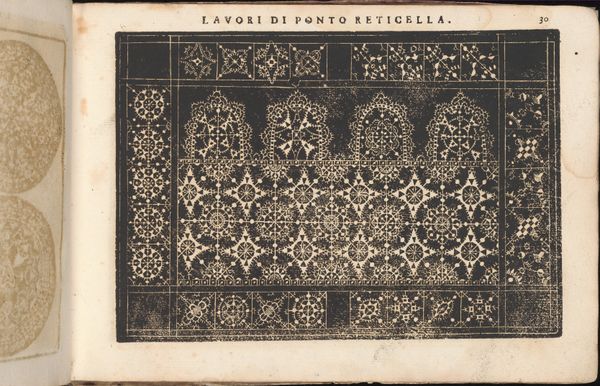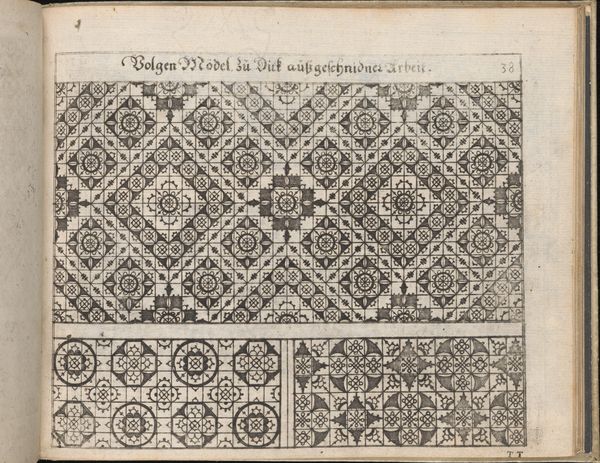
Corona delle Nobile et Virtuose Donne, Libro Terzo, page 24 (recto) 1620
drawing, graphic-art, print, engraving
drawing
graphic-art
11_renaissance
line
decorative-art
italian-renaissance
engraving
Dimensions: Overall: 5 1/2 x 7 11/16 in. (14 x 19.5 cm)
Copyright: Public Domain
Curator: This densely patterned engraving feels surprisingly contemporary, even though it's over 400 years old. Editor: Indeed. The page before us, created around 1620, is plate 24 from Cesare Vecellio’s “Corona delle Nobile et Virtuose Donne, Libro Terzo.” He’s depicting various lace patterns intended for the collars and ruffs of Bavarian women, quite stylish for the time! Curator: Looking at the intricacy, I am immediately drawn to the process of its making; the work involved in creating such a print, and then replicating the lace by hand, suggests the labor of the artist, the printer and, indeed, the lacemakers themselves. Were these patterns readily available, or were they restricted by class? Editor: Interesting. My focus is on the overall structure. Vecellio uses very fine lines and stark black-and-white contrasts. Semiotically speaking, the geometric forms suggest precision and order. Yet, look closely and you'll see these structures are also interspersed with naturalistic, curving motifs—a dance of opposites. Curator: Precisely, and these women making and wearing these collars also negotiate rigid social conventions through consumption and decoration. Where did they source the thread? Who benefitted economically? Was this a localized industry, or something more widespread? Editor: Focusing on those design components themselves—the visual impact of the repeating floral motifs—consider the symmetry and asymmetry. The linear framework supports these freer elements. It speaks to a wider artistic embrace of complexity that reflects how designs of this period were deeply intertwined with nature and symbolic patterns. Curator: For me it is difficult to isolate aesthetic value from this page without also thinking about Italian mercantile practices of this period, how it supported artisanal production, and perhaps even fed nascent capitalist systems throughout Europe. Editor: Perhaps we are both right to celebrate that! I am left contemplating Vecellio’s composition, not just for the social and financial, but its remarkable visual and intellectual appeal that extends to our time.
Comments
No comments
Be the first to comment and join the conversation on the ultimate creative platform.
